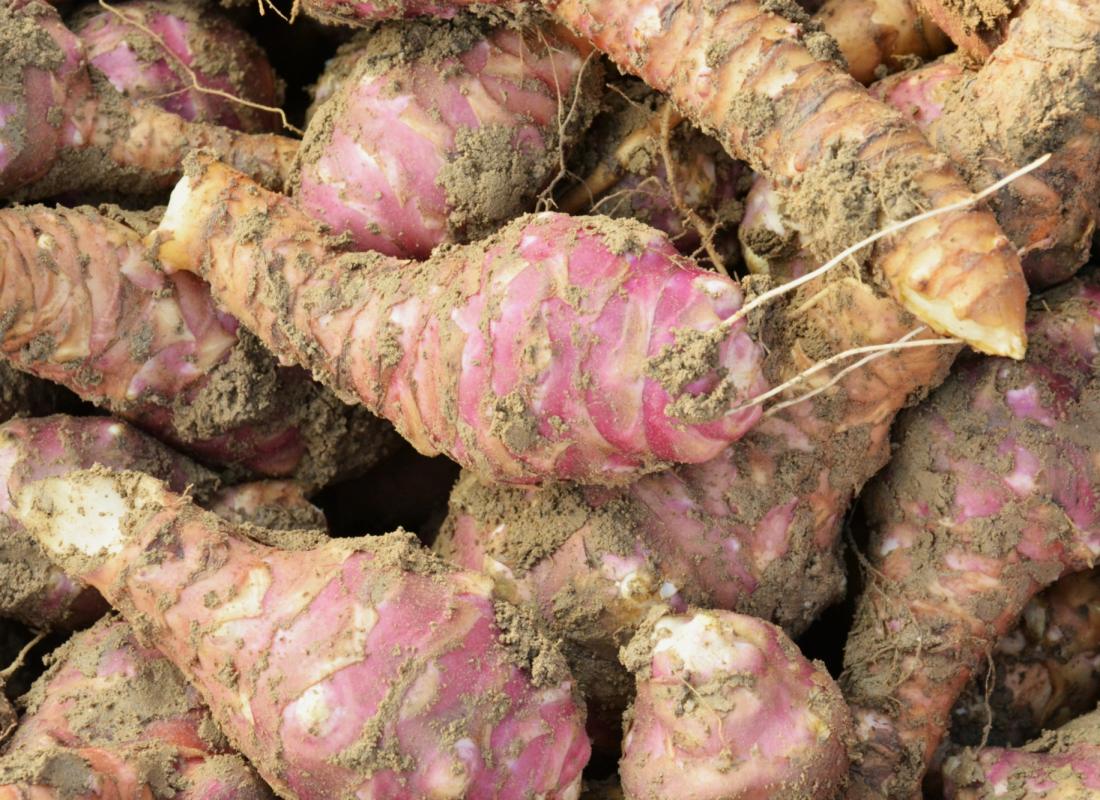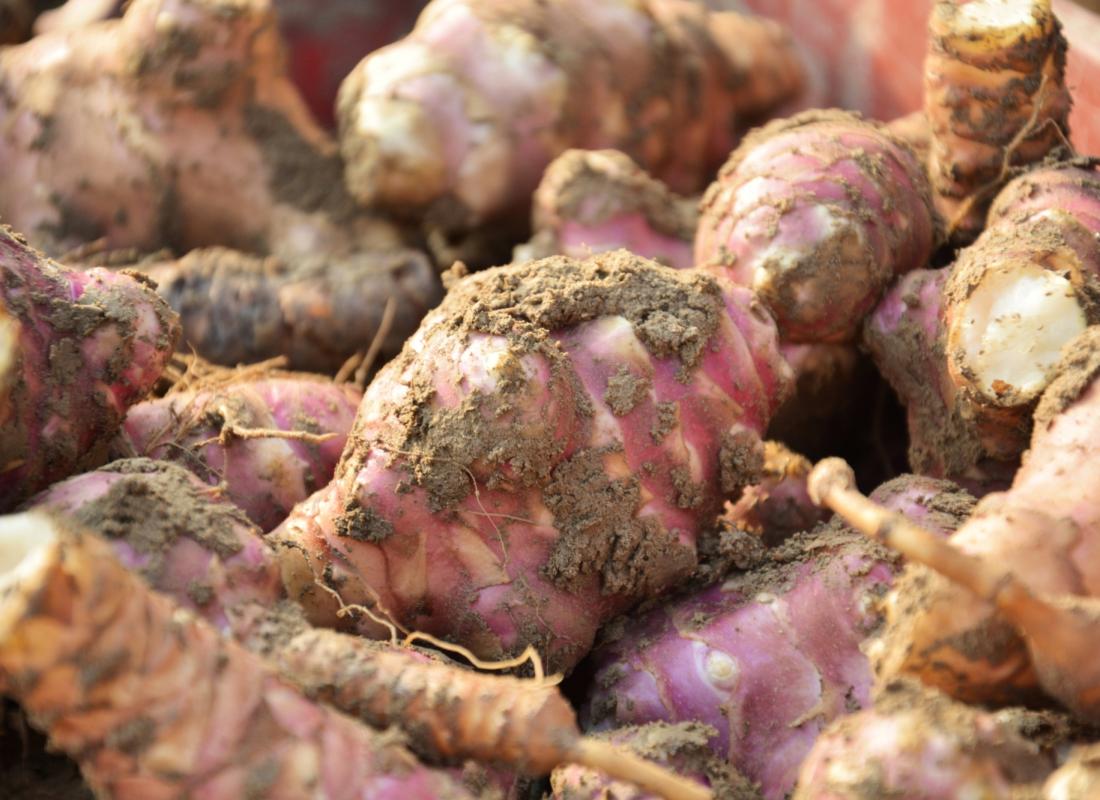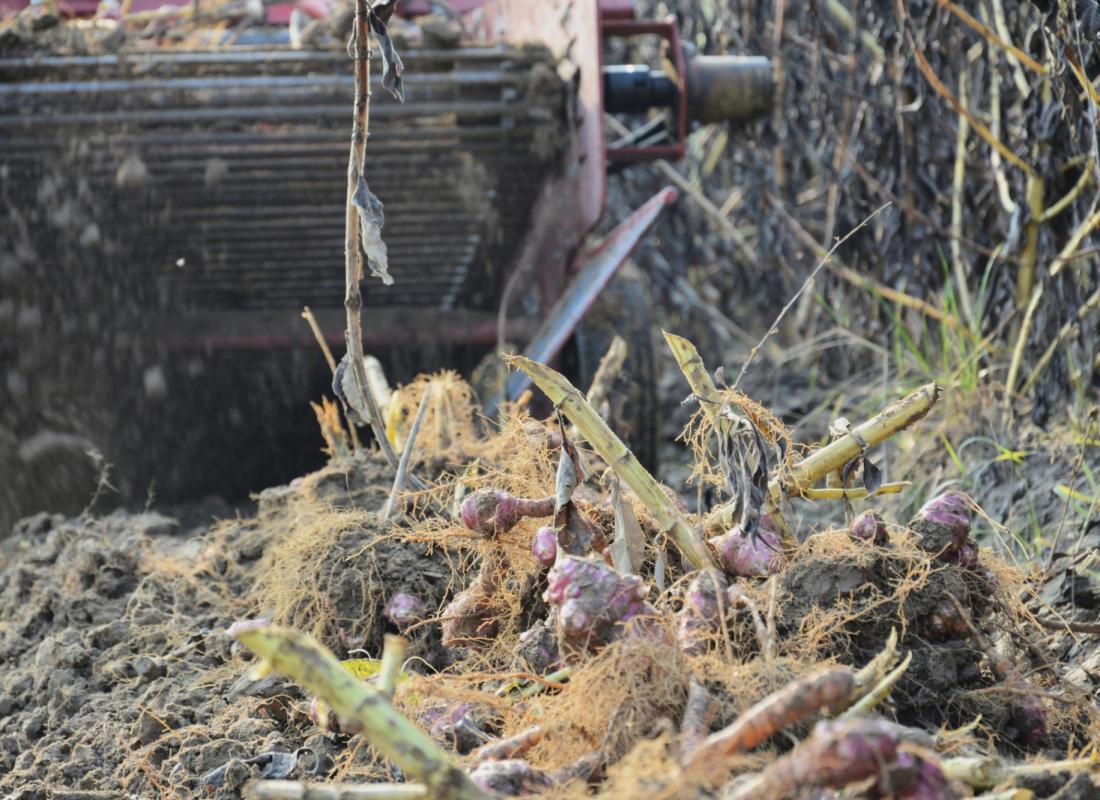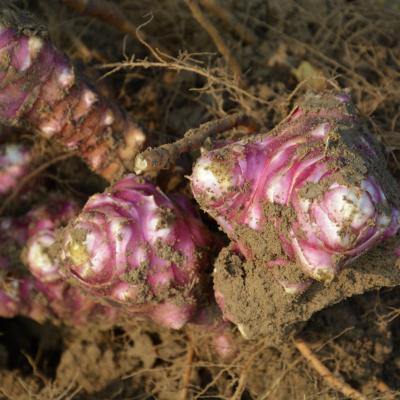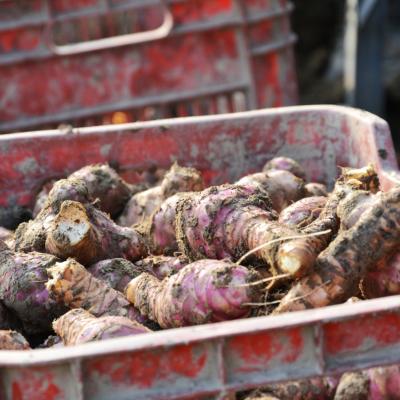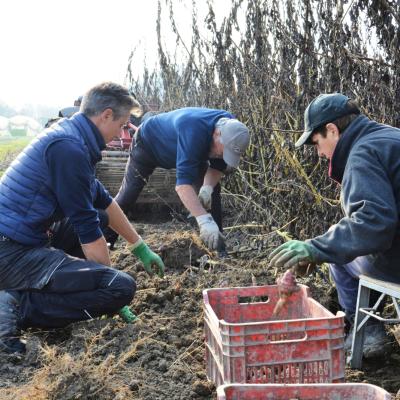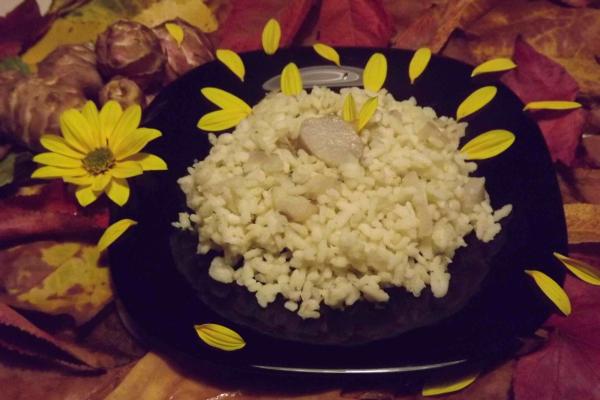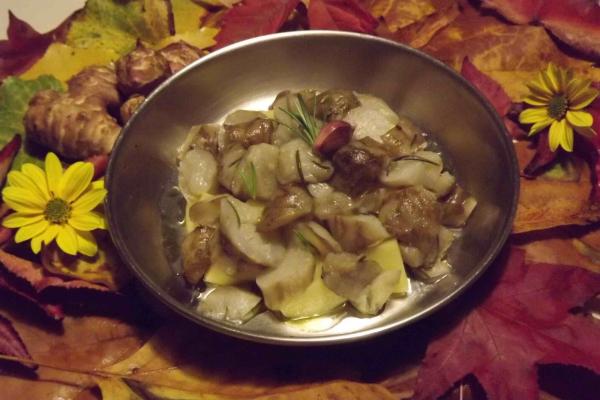features
Helianthus tuberosus L., better known as Jerusalem artichoke, is a plant of the Asteraceae family native to North America. Closely related to il girasole, it was introduced to Europe during the 17th century. It is currently found spontaneously in countries with a temperate climate, where it prefers humid and cool places.
During the flowering of Jerusalem artichoke, from late summer to early autumn, it is normal to see spots of yellow flowers that resemble small sunflowers appear here and there along the ditches, channels and banks, which indicate their presence in the landscape like golden flames.
The edible part of the plant is the tuber, a perennial organ in which the plant stores the nutrient reserves useful for spring vegetative recovery. Due to its characteristics, it is indicated in the diet of diabetics, to reduce cholesterol and stabilize the concentration of sugar in
Producers
The cultivation of Jerusalem artichoke is still limited, and it finds space especially in marginal and uncultivated land, where there is no risk of this plant becoming a pest for other crops. With a view to the use of all agricultural spaces and cultural diversification, Jerusalem artichokes are sure to find their place.
The particular organoleptic characteristics of Jerusalem artichoke make it an excellent food, to be used both raw and cooked. Finely cut from raw, it can be used in salads. Quickly blanched with water and vinegar, spiced at will with bay leaves, pepper and cloves, it can be preserved in oil for a typical preparation of the Venetian mountains, the “cartridges”. Jerusalem artichoke can also be used as a vegetable ingredient for the preparation of an
